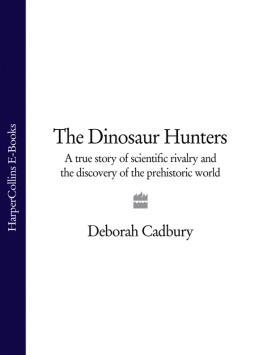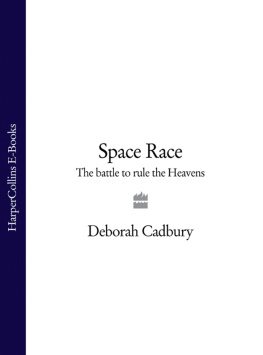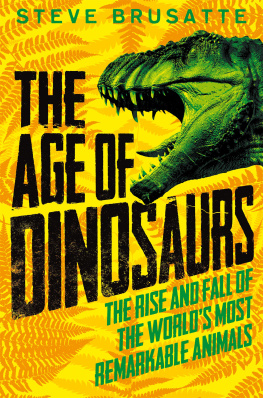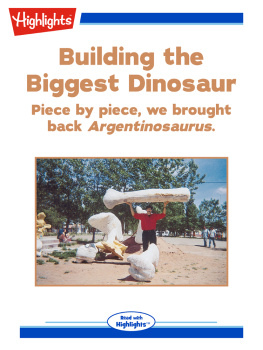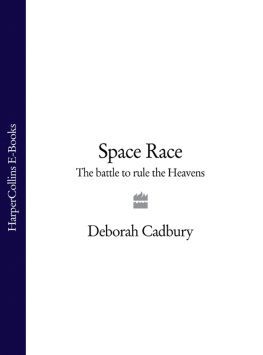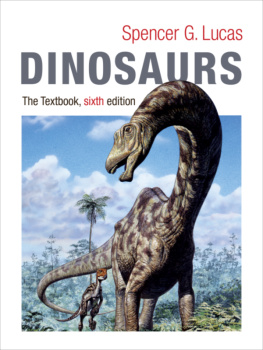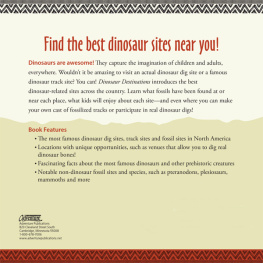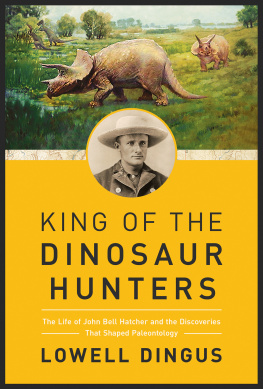Deborah Cadbury - The Dinosaur Hunters
Here you can read online Deborah Cadbury - The Dinosaur Hunters full text of the book (entire story) in english for free. Download pdf and epub, get meaning, cover and reviews about this ebook. publisher: HarperCollins Publishers, genre: Non-fiction. Description of the work, (preface) as well as reviews are available. Best literature library LitArk.com created for fans of good reading and offers a wide selection of genres:
Romance novel
Science fiction
Adventure
Detective
Science
History
Home and family
Prose
Art
Politics
Computer
Non-fiction
Religion
Business
Children
Humor
Choose a favorite category and find really read worthwhile books. Enjoy immersion in the world of imagination, feel the emotions of the characters or learn something new for yourself, make an fascinating discovery.
- Book:The Dinosaur Hunters
- Author:
- Publisher:HarperCollins Publishers
- Genre:
- Rating:5 / 5
- Favourites:Add to favourites
- Your mark:
- 100
- 1
- 2
- 3
- 4
- 5
The Dinosaur Hunters: summary, description and annotation
We offer to read an annotation, description, summary or preface (depends on what the author of the book "The Dinosaur Hunters" wrote himself). If you haven't found the necessary information about the book — write in the comments, we will try to find it.
The Dinosaur Hunters — read online for free the complete book (whole text) full work
Below is the text of the book, divided by pages. System saving the place of the last page read, allows you to conveniently read the book "The Dinosaur Hunters" online for free, without having to search again every time where you left off. Put a bookmark, and you can go to the page where you finished reading at any time.
Font size:
Interval:
Bookmark:

For my mother and Martin,
the first readers,
with love
An Ocean Turned to Stone
She sells sea-shells on the sea-shore,
The shells she sells are sea-shells, Im sure
For if she sells sea-shells on the sea-shore
Then Im sure she sells sea-shore shells.
Tongue-twister by Terry Sullivan, 1908,
associated with Mary Anning
O n the south coast of England at Lyme Regis in Dorset, the cliffs tower over the surrounding landscape. The town hugs the coast under the lee of a hill that protects it from the south-westerly wind. To the west, the harbour is sheltered by the Cobb, a long, curling sea wall stretching out into the English Channel the waves breaking ceaselessly along its perimeter. To the east, the boundary of the local graveyard clings to the disintegrating Church Cliffs, with lichen-covered gravestones jutting out to the sky at awkward angles. Beyond this runs the dark, forbidding crag face of Black Ven, damp from sea spray. The landscape then levels off across extensive sweeps of country, to where the cliffs dip to the town of Charmouth, before rising sharply again to form the great heights of Golden Cap.
At the beginning of the nineteenth century, according to local folklore, the stones on Lyme Bay were considered so distinctive that smugglers running ashore on blind nights knew their whereabouts just from a handful of pebbles. However, it was not only smugglers and pirates who became familiar with the peculiarities of these famous cliffs. Through a series of coincidences and discoveries Lyme Bay soon became known as one of the main areas for fossil hunting. Locked in the layers of shale and limestone known as the blue lias were the secrets of a vast, ancient ocean now turned to stone, the first clue to an unknown world.
In 1792, war erupted in Europe and it became dangerous for the English gentry to travel on the Continent. Many of the well-to-do classes adopted the resorts of the south coast of England. The dramatic scenery around Lyme Bay became a favourite among those who spent part of the season at Bath. In the summer, smart carriages often lined the Parade and the steep, narrow streets that nestled into the hillside. The novelist Jane Austen was among those who visited early in the nineteenth century. She was charmed by the High Street, almost hurrying into the sea, and the very beautiful line of cliffs stretching out to the east. The Cobb curving around the harbour became the dramatic setting for scenes in her new novel Persuasion. It was here that Louisa Musgrove fell lifeless her eyes closed, her face like death, and was nursed back to health by the romantic sea captain.
Jane Austens letters to her sister, Cassandra, reveal that during her short stay she met an artisan in the town by the name of Richard Anning. He was summoned to value the broken lid of a box and, according to Jane Austen, was a sharp dealer. She told her sister that Annings estimate, at five shillings, was beyond the value of all the furniture in the room together.
Richard Anning, even as a skilled carpenter, struggled to make a living. The blockade of European ports during the Napoleonic Wars had caused severe food shortages. With no European corn available, the price of wheat had risen sharply, from 43 shillings a quarter in 1792 just before the war, to 126 shillings in 1812. Since bread and cheese was the staple diet for many in the southern counties, the spiralling price of a loaf caused great suffering. Wages did not rise during this period, and in many districts workers received a supplement from the parish to enable them to buy bread. Industrious labourers effectively became paupers relying on parish charity, and there was a real fear of starvation. While the gentry, glimpsed beyond sweeping parklands in their country estates, benefited from high prices and seemed impervious to the effects of war, the poor began to riot. The flaming rick or barn became a symbol of the times. Richard Anning was himself a ringleader of one protest over food shortages.
In rural Dorset, the poor were not only hungry, but with a shortage of fuel they also faced damp, cold conditions and sometimes worse. Richard Anning and his wife, Molly, lived in a cottage in a curious array of houses built on a bridge over the mouth of the River Lym. On one occasion, they awoke to find that the ground floor of their home had been washed away during the night. Their modest home had succumbed to an exceptionally rough sea which had worked the havoc.
The desire to keep warm could have lain behind a tragedy that befell the Annings eldest child, Mary, at Christmas in 1798. The event was reported starkly in the Bath Chronicle: A child, four years of age, of Mr R. Anning, a cabinet maker of Lyme, was left by the mother about five minutes in a room where there were some shavings by a fire The girls clothes caught fire and she was so dreadfully burnt as to cause her death. Whether Mary was huddling too close to the flames for warmth, or accidentally stumbled, is not known. It is known, however, that her distraught mother, on the birth of their next daughter six months later, called her Mary in memory of her dead sister.
Naming a newborn after a child that had died was a common practice at a time when a quarter of poor infants died in their first year and half were dead before the age of five. Many were undernourished and readily succumbed to consumption, pneumonia, smallpox, measles or other diseases. Apart from the sudden death of their eldest daughter Mary, the Annings had already lost two other children, Martha and Henry, by the year 1800. But fate was to intervene in an unexpected way in the young life of the second Mary Anning.
That summer, when Mary was just one year old, news reached Lyme Regis that a touring company of riders was to perform near the town. Among the enticements were a display of vaulting, riding stunts and a lottery, with prizes such as copper tea-kettles and legs of mutton. The arrival of the travelling performers was a welcome distraction for the local inhabitants, and crowds of people trekked past the church and the gaol near the Annings house to the equestrian show, set in a field on the outskirts of town. Mary was taken along in the care of a local nurse, Mrs Elizabeth Hasking.
By late afternoon a heavy thunderstorm developed, but the crowds would not disperse, perhaps lingering to see who had won the lottery. Then, in the words of the local schoolmaster, George Roberts: a vivid discharge of electric fluid ensued, followed by the most awful clap of thunder that any present ever remembered hearing, which re-echoed around the fine cliffs of Lyme Bay. All appeared deafened by the crash. After a momentary pause a man gave the alarm by pointing to a group that lay motionless under a tree.
There were three dead women, among them Marys nurse, Elizabeth, whose hair, arm and cap along the right side were much burnt and the flesh wounded. She was still holding the baby, who was insensible and could not be roused. The second Mary Anning, known to be dear to her parents, was carried back to Lyme, in appearance dead. But when bathed in hot water, gradually she was revived, to the joyful exclamations of the assembled crowd. According to the family, this was a turning-point for the young Mary Anning: She had been a dull child before but after this accident she became lively and intelligent.
As Mary grew older, she took a keen interest in helping her father gather fossil curios from the beach to sell to tourists. In the early part of the century, Richard Anning had several more children to support: the boys Joseph, Henry, Percival and Richard and another daughter, Elizabeth. To supplement his meagre income as a carpenter, Mary and her father set up a curiosity table outside their home to sell their wares to the tourists. However, selling fossils was a competitive business.
Font size:
Interval:
Bookmark:
Similar books «The Dinosaur Hunters»
Look at similar books to The Dinosaur Hunters. We have selected literature similar in name and meaning in the hope of providing readers with more options to find new, interesting, not yet read works.
Discussion, reviews of the book The Dinosaur Hunters and just readers' own opinions. Leave your comments, write what you think about the work, its meaning or the main characters. Specify what exactly you liked and what you didn't like, and why you think so.

